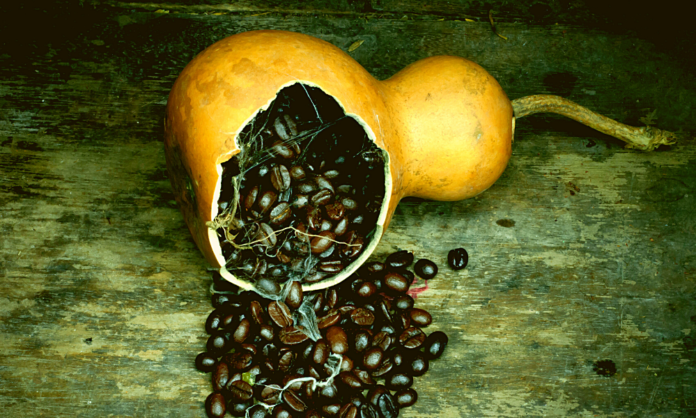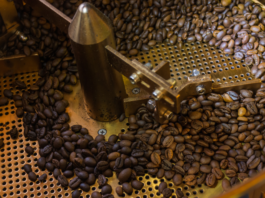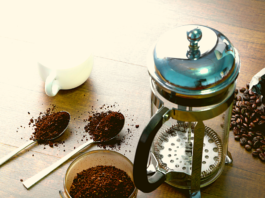Contents
What to do with old coffee beans? According to the International Coffee Organization, during 2020-2021, the planet consumed approximately 166,628,000 bags of coffee, each weighing 66kg or 145.5lbs. That’s over 24 BILLION pounds of coffee! Now, consider this; how many people throw away the used coffee grounds, or stale beans? So much wasted potential!
Instead of sending those old beans or grounds to the local trash dump, you can re-purpose them in many different very useful ways! This means some fun projects for the kids as well as some interesting must-try-life-hacks that can have unexpected amazing results!
Read More:
Cleanser

The strong concentration of tannic acid found in coffee beans can break down substances such as grease, grime, soot, and many other hard-to-clean messes. The acidity along with the caffeine content and the overall abrasive texture of coffee; in any form, makes for a high-quality cleaner that is both versatile and aromatic!
Abrasive
When you grind those beans into a relatively coarse powder or if you’re using grounds that you just brewed, you can add warm water until it becomes a thick paste. The consistency of the paste is entirely up to you and can be adjusted depending on the task at hand.
Also, depending on the task, you can substitute the water with vinegar (any type) to boost the effectiveness of the tannic acid. If utilized, coffee makes a very strong cleanser that will prove invaluable to your household!
This ingenious re-purposing can be used to clean grill grates, linoleum, fireplaces, and it’ll even tackle the oil stains on your concrete driveway
Personal Cleanser
After having your morning coffee, try this! Before you get in the shower, grab those grounds from the pot and take them with you. While using your shampoo, simply take a few fingers full of the grounds and add them to the lather. The results are a very smooth scalp that is free from dandruff! The best part about this one is that caffeine is a natural preventative to hair loss!
You could also take about a cup of used grounds and add them to your body wash. By doing this, you create an exfoliation formula that will provide consistently smooth skin that feels fresh and looks great! Since coffee is an antioxidant, this can also help to reduce the effects of aging, and bags under the eyes as long as you use it often enough! You’ll feel the difference almost immediately!
Deodorizer
If you’ve ever left your coffee exposed in the refrigerator for even a short while before brewing it, then you already know that coffee is a sponge that will soak up every available aroma in the local vicinity. Similar to how leaving a small amount of baking soda in the refrigerator will keep the smell to a minimum; ground coffee can be used to accomplish the same goal. Since moistened coffee grounds are the 5-star hotels of many nasty organisms, this is strictly a job for dry grounds!
Potpourri
On the other end of the spectrum, this is a method where you want to keep the coffee beans whole and soaking wet in a potpourri burner. As a garnish for the olfactory senses, try adding cinnamon sticks! If you’re not a potpourri user, and perhaps you prefer wax melts, then try the beans as an additive to your favorite wax in a wax warmer. Vanilla would pair excellently!
Food Ingredient
Now, it seems like an obvious statement to suggest that coffee could be used as an ingredient in many foods, because well… It IS a food product. Keep reading to find out just how versatile this seemingly monotonous commodity truly is!
Read More:
- Manual vs Electric Coffee Grinders: Which is Right for You?
- Best Coffee Scale: Top 10 Editor’s Picks
- Best Coffee Pod Holders: Top 10 Editor’s Pick
- Top 5 Best Burr Coffee Grinders: Reasons to Pick The Right One
- Best Coffee Grinder For The Money – The Ultimate Guide!
Chocolate Covered Coffee Beans
You only need two ingredients and parchment paper. Common sense should tell you what the ingredients are, but for the sake of the recipe:
- Chocolate Chips
- Coffee Beans
Now that we have that part taken care of, you simply melt the chocolate chips into a nice decadent liquid. To do this there are a few possible methods. You can use the microwave in 30-second intervals. This is probably the safest bet for most. You may also use low-heat on a stove-top, but must be mindful not to burn the chocolate; be sure to continuously stir the melting chocolate or it will become lumpy!
Once you have the chocolate fully melted, you just add enough coffee beans to use as much of the chocolate as possible while still making sure each bean is fully coated. The efficient way is to dump as many beans as you can into the bowl without allowing them to rise above the chocolate. Once the liquid has had a chance to penetrate the internal areas of the beans, give it a good stir with a fork, and begin to strain the beans from the mixture. Allow them to dry on the parchment paper and then enjoy!
Coffee Ground Ice Cream
This isn’t the same as the recipe for coffee ice cream handmade from custard and blended in an ice cream maker. This method is far simpler and can be done by anyone with the means of doing so. It doesn’t require an ice cream maker or even basic culinary skills.
Just take those beans and grind them up nicely! The majority of those who use this technique say that coarser grounds are essential, but truly any consistency will suffice! You may even use instant coffee, but with the instant, you lose a part of the experience since the powder is water-soluble.
Next, you get a bowl of ice cream as you normally would. Vanilla and chocolate are the preferred flavors that blend the best, but you can use whatever you’d like! Sprinkle your grounds over the frozen treat to enjoy a nice twist on an old favorite!
Crusting The Bark
Just like wine, coffee has very high acidity, making it perfect for many different applications that you normally might not expect. For instance, also just like wine, coffee makes an excellent addition to a rub for almost any kind of meat you can imagine! This can be coffee grounds added to a rub or brewed coffee as the base of a rub; either way, you’ll be shocked by the miraculous flavor!
The coffee will caramelize when the meat cooks, which creates a sweet flavored glaze over the meat. In the world of BBQ, they refer to this as “crusting the bark.” It not only grants an amazing flavor profile but also tenderizes the meat incredibly well. The tannic acid in the coffee helps to penetrate and soften the meat, allowing the flavors from the other chosen seasonings to penetrate more as well!
Pest Control
Two very common intruders despise the presence of coffee. One is ants; including any species of ant that you are likely to see in your house. The other is fleas, and let’s face it, that’s a headache we could do without!
To rid your house of the ant problems, you have to do a little detective work. Follow the trail of ants to find out where they are coming from. Usually, they have one main colony and several smaller “satellite” colonies spread throughout the property, so you may have to watch them for a few days to discern which one is the main colony.
Then you take your ground-up coffee, used or unused, and spread it over and around the colony. You could save the detective work if you have enough disposable coffee, and just dump it liberally throughout your yard. This can cause a lot of overgrowths, however, which you’ll read about momentarily.
For fleas, use dry grounds and spread them throughout your home on the carpet as you would carpet freshener. Leave it overnight or for two days if you don’t mind the coffee carpet. Then vacuum the mess, which will have some flea carcasses added to it.
You may also use the paste from the first section of this guide to wash your animals’ coats. Leave the paste on them for a few minutes before rinsing, and you’ll notice the difference when you see the fleas going down the drain with the grains!
Read More:
- Best Mr Coffee Espresso Machines
- 10 Best Coffee Maker with Grinder Reviews
- Best Espresso Machines Under $500
- Best Nespresso Espresso Machines
- Coffee Makers That Brew at 200 Degrees F
Compost
All you need to worry about with this re-purpose is simply mixing the used grounds well into your potting soil or compost. After that, you only need to use the soil as you normally would and you will reap a massive benefit!
The biggest gain from coffee grounds concerning gardening is that you’re adding organic components to the soil. This boosts nitrogen levels, and also has the bonus of water retention and aeration! All of which is astounding for plant life! Depending on what you’re growing, you may find it beneficial to add a little lime or calcium carbonate to buffer the acid content.
If you’re interested in Mycology, coffee also makes for an amazing mushroom nutrient! Simply add it in proportion to your substrate mix before you sterilize it, and you’ll want to balance that acidity with calcium carbonate this time around. Many varieties of mushrooms love to colonize coffee! Shiitake, Oysters, and Morels are a few that you may love to cultivate, and will find very tasty! This also makes a super cool activity for kids!







